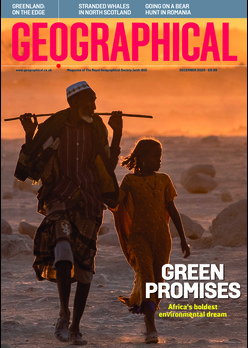
University of Oxford emeritus Barry Cunliffe illustrates the history of the Sahara and the people of Northern Africa in this comprehensive new book
Review by Shafik Meghji
In 1324, Mansa Musa, ruler of the Malian empire and often described as one of the wealthiest people in history, set off on the Hajj, travelling across North Africa to Cairo and then on to Medina and Mecca. The journey attained legendary status, thanks to his vast entourage, which included 80–100 camels, each ‘carrying up to 130 kilograms of gold dust’ to be lavishly dispersed as gifts and donations, as well as to purchase items for himself and his retinue. While in Egypt, Musa spent ‘with such abandon that the value of gold was depressed for ten years’. On the return leg, his stocks were so diminished that he had to borrow from Egyptian gold merchants.
This story helps to illustrate one of the key themes in this comprehensive new book by University of Oxford emeritus professor Barry Cunliffe: although often depicted as an ‘insuperable obstacle’ and a hostile environment, the Sahara is also a place of connections that has been crossed for millennia by pilgrims, merchants, nomads, enslaved people, migrants, soldiers, explorers and many others, not to mention trade goods, religions and technology. Charting the history of the world’s largest hot desert and the surrounding communities across 250 million years, Facing the Sea of Sand covers a huge amount of ground, yet the clarity of the writing and the array of accompanying maps, graphs, illustrations and photographs ensure that it doesn’t feel overwhelming.
Throughout, there are intriguing nuggets of information, such as the peppercorn discovered in the nostril of the mummified body of pharaoh Ramses II (circa 1,200 BCE), which hints at the early trade links between the western Sahara and southern India, alongside vivid accounts from the likes of 14th-century historian-geographer Ibn Battuta, ‘born in Tangier of Berber parents, who became one of the greatest travellers and travel writers of his time’.
Highlighting the role played by climate change in the history of the Sahara and the people who live on its fringes, Cunliffe makes the case that Africa and Eurasia should be viewed as ‘one great landmass bound together by their shared history’.




